Helping Children Find Calm at Their Fingertips
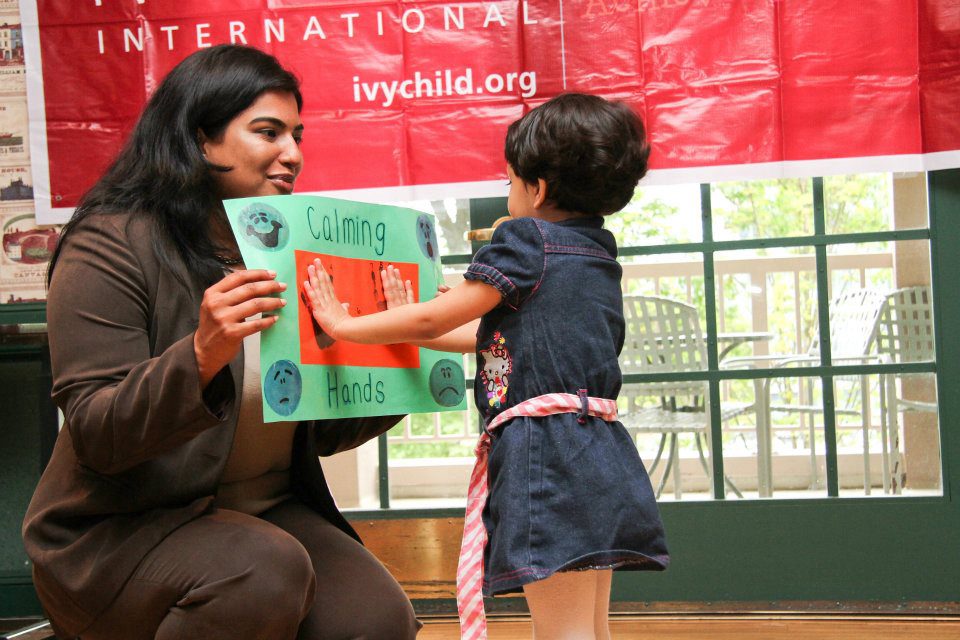
When children feel anxious, overwhelmed, or upset, mindfulness practices like Calming Hands can help them feel safe, grounded, and calm. This simple yet powerful exercise, created by Rose Felix Cratsley, Founder & CEO of Ivy Child International, combines mindful breathing, counting, and handprint art to soothe strong emotions and build emotional resilience.
Mindfulness can be fun, simple, and hands-on—literally! Calming Hands invites children to explore breathing, focus, and creativity through the tactile sensation of their own hands. It’s perfect for caregivers and educators who want to help kids find calm, focus, and emotional balance in a playful and interactive way.
How to Practice Calming Hands
What You’ll Need:
- Paper (large enough for handprints)
- Non-toxic markers, crayons, or paint
- A comfortable and quiet space
Step-by-Step Guide:
- Make the Handprint
Invite your child to trace their hand onto a piece of paper or create a painted handprint. Let them customize it and make it their own: choosing colors or decorating. - Number the Fingers
Together, write the numbers 1 to 10 on the fingers, starting at the thumb and moving outward. - Begin Mindful Breathing
Encourage your child to place their real hands on top of their handprints.- Start (1): Breathe in deeply, then exhale slowly as you count aloud.
- Move to the next finger (2): Breathe in deeply, then exhale slowly as you count again.
- Continue the pattern, breathing in and out for each finger, counting from 1 to 10.
- Repeat As Needed
Encourage your child to take their time and enjoy this exercise, they can trace back through the numbers or start again. Repeating this practice reinforces calmness and focus.
Why It Works
- Breathing Practice: The finger-by-finger breathing technique teaches kids to inhale and exhale deeply while counting from 1 to 10.
- Self-Reflection: Encourages kids to observe how their hands and bodies feel after the practice, reinforcing self-awareness and relaxation.
- Calm and Creative: By combining art and mindfulness, this practice becomes a lasting tool for emotional regulation and relaxation.
How to Adapt for Kids with Sensory Needs
For children with sensory processing needs, encourage them to explore different textures while practicing Calming Hands. Using soft fabric, smooth stones, or textured paper during the exercise can help them connect more deeply with their senses and enhance the calming effect.
Parental Hack
This practice is most effective when caregivers model the activity alongside children, reinforcing the idea that mindfulness is a family activity and ritual. By practicing together, both kids and parents strengthen their emotional resilience and psychological immune system.
Highlights and Benefits
- Introduction: Guides children to notice the sensations in their hands and introduces the concept of hands as calming tools.
- Breathing Practice: Teaches kids to inhale and exhale deeply while counting, promoting relaxation and focus.
- Reflection: Helps children reflect on how their body feels post-practice, fostering mindfulness and self-awareness.
- Creative Art: Integrates creativity by making handprints, decorating them, and turning them into visual reminders of calm.
Make Art With Your Handprint
The Calming Hands practice is best paired with an engaging art activity. Children can trace or make handprints, decorate them, and personalize their calming hands. This hands-on activity teaches kids to ease difficult emotions while providing a visual and tactile reminder of the breathing practice. It turns mindfulness into a creative keepsake that kids can return to in stressful moments.
Consider mounting the handprint art on the fridge, bedroom door, or even in the car as a calming tool that everyone can use.
Guided Audio Practice: Use Your Hands to Explore Mindful Breathing
- Calm and Creative: By combining art and mindfulness, this practice becomes a lasting tool for emotional regulation and relaxation.
How to Adapt for Kids with Sensory Needs
For children with sensory processing needs, encourage them to explore different textures while practicing Calming Hands. For example, using soft fabric, smooth stones, or textured paper during the exercise can help them connect more deeply with their senses and enhance the calming effect of the practice.
Parental Hack
This practice is most effective when caregivers model the activity alongside children, reinforcing the idea that mindfulness is a family activity and ritual. By practicing together, both kids and parents strengthen their emotional resilience and psychological immune system.
Highlights and Benefits
- Introduction: Guides children to notice the sensations in their hands and introduces the concept of hands as calming tools.
- Breathing Practice: Teaches kids to inhale and exhale deeply while counting, promoting relaxation and focus.
- Reflection: Helps children reflect on how their body feels post-practice, fostering mindfulness and self-awareness.
- Creative Art: Integrates creativity by making handprints, decorating them, and turning them into visual reminders of calm.
Make Art With Your Handprint
The Calming Hands practice is best paired with an engaging art activity. Children can trace or make handprints, decorate them, and personalize their calming hands. This hands-on activity teaches kids to ease difficult emotions while providing a visual and tactile reminder of the breathing practice. It turns mindfulness into a creative keepsake that kids can return to in stressful moments. Consider mounting the handprint art on the fridge, bedroom door, or even in the car as a calming tool that everyone can use.
Calming Hands Handout: For Easy Reference
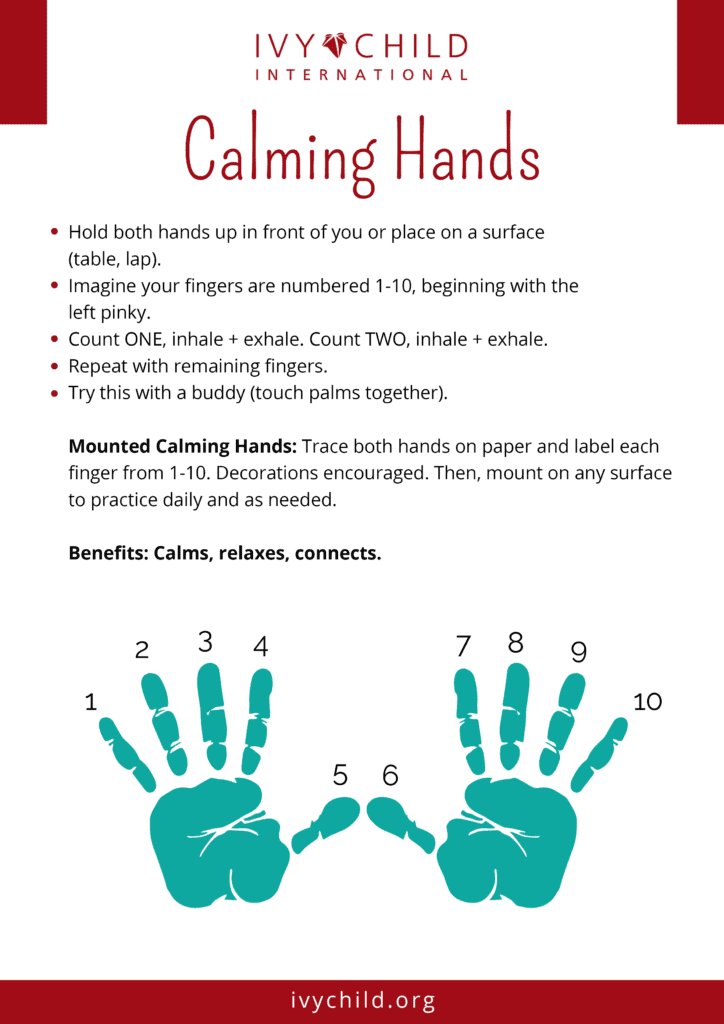
Guided Audio Practice: Use Your Hands to Explore Mindful Breathing

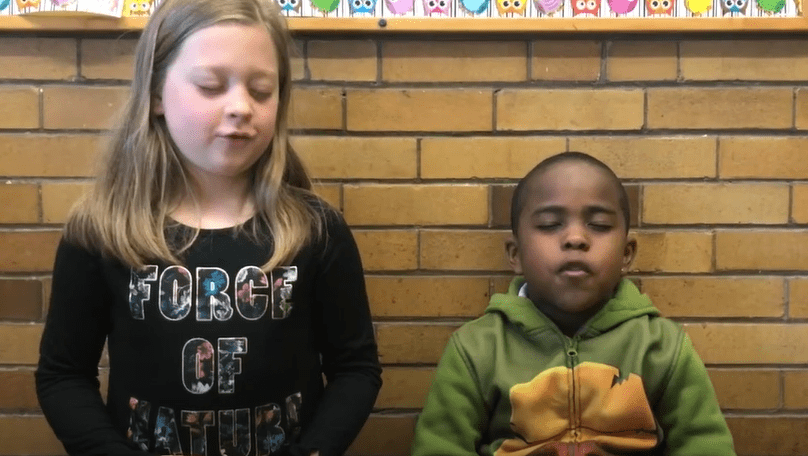

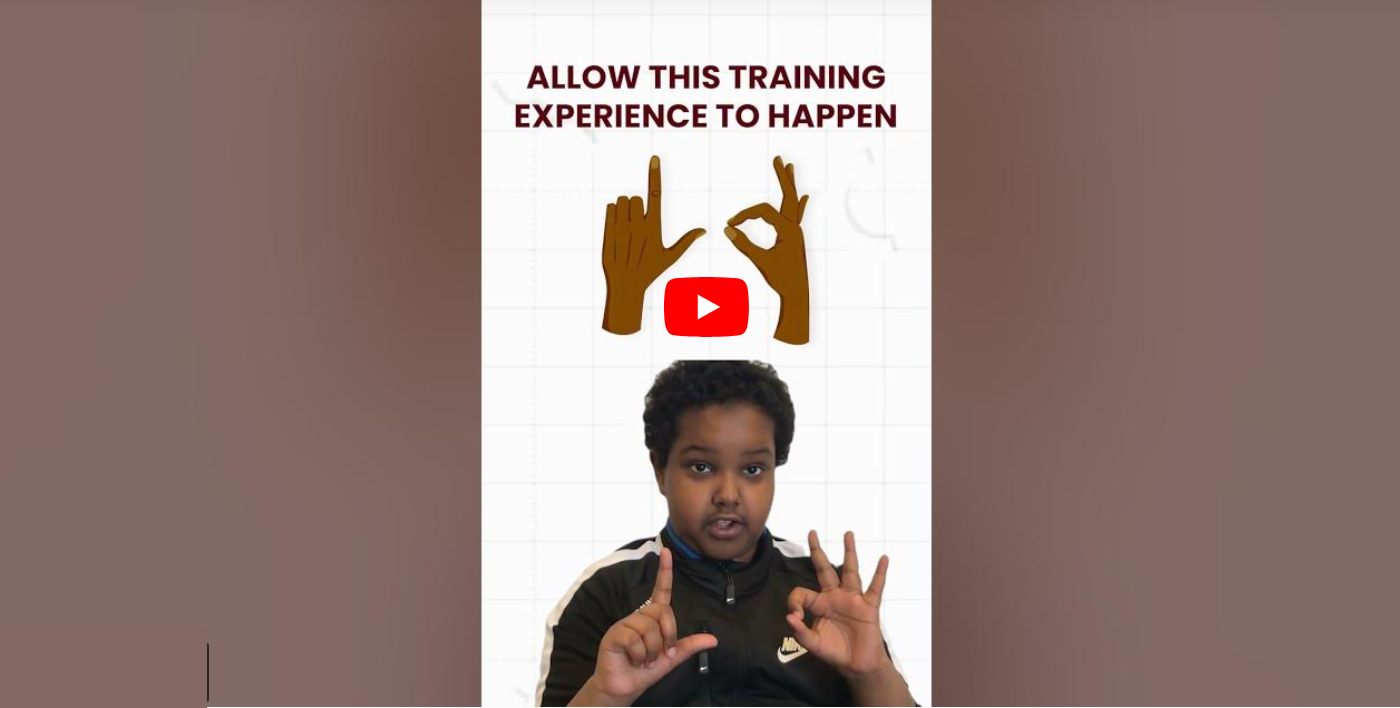
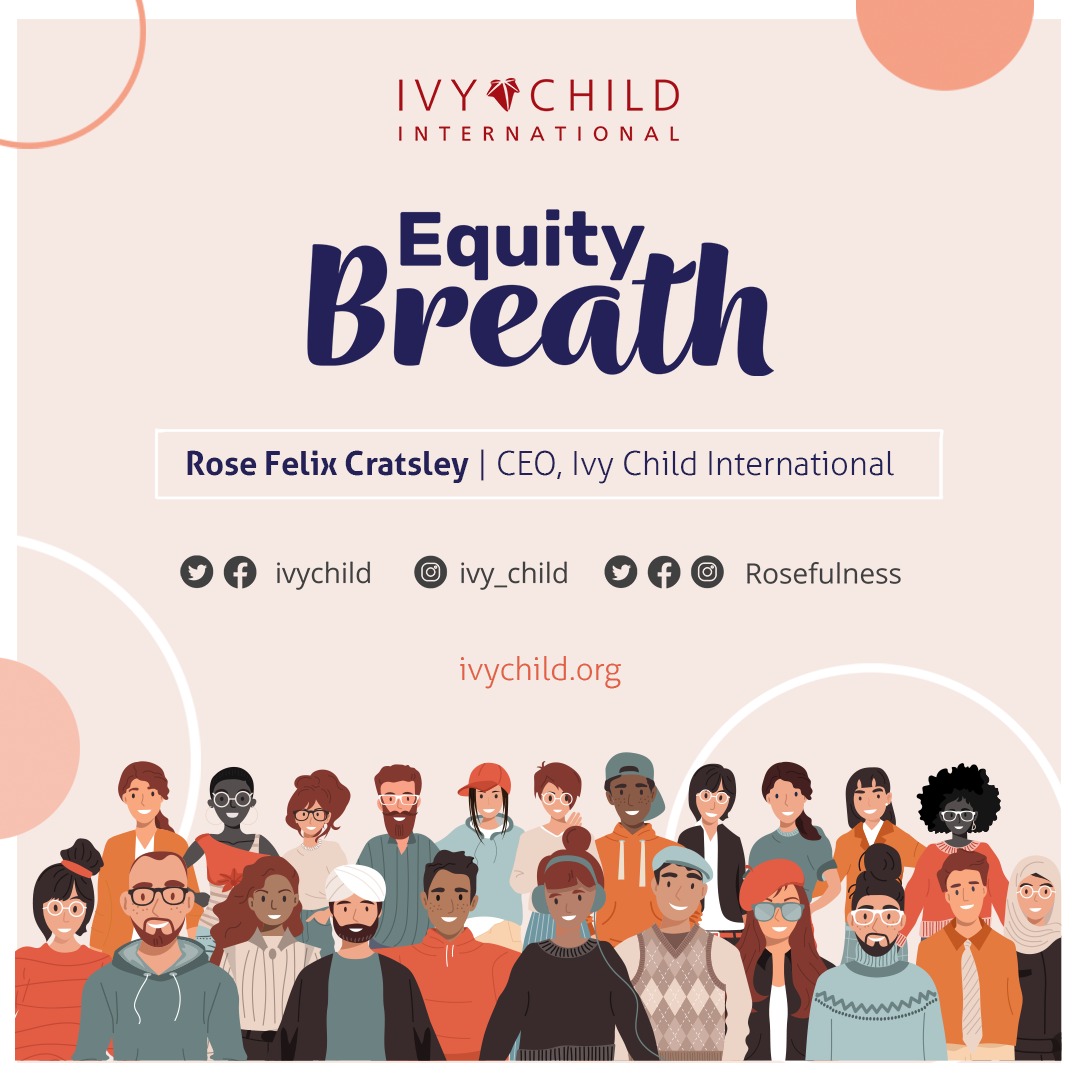
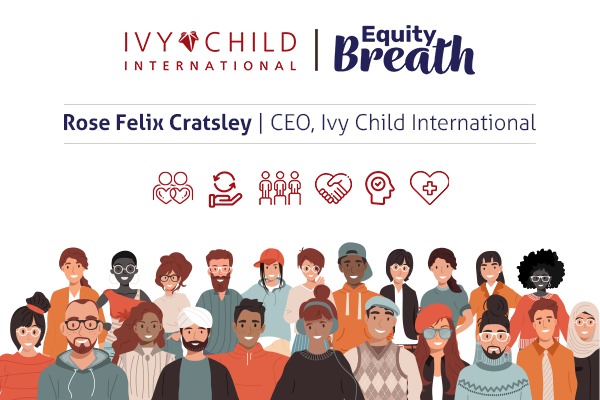
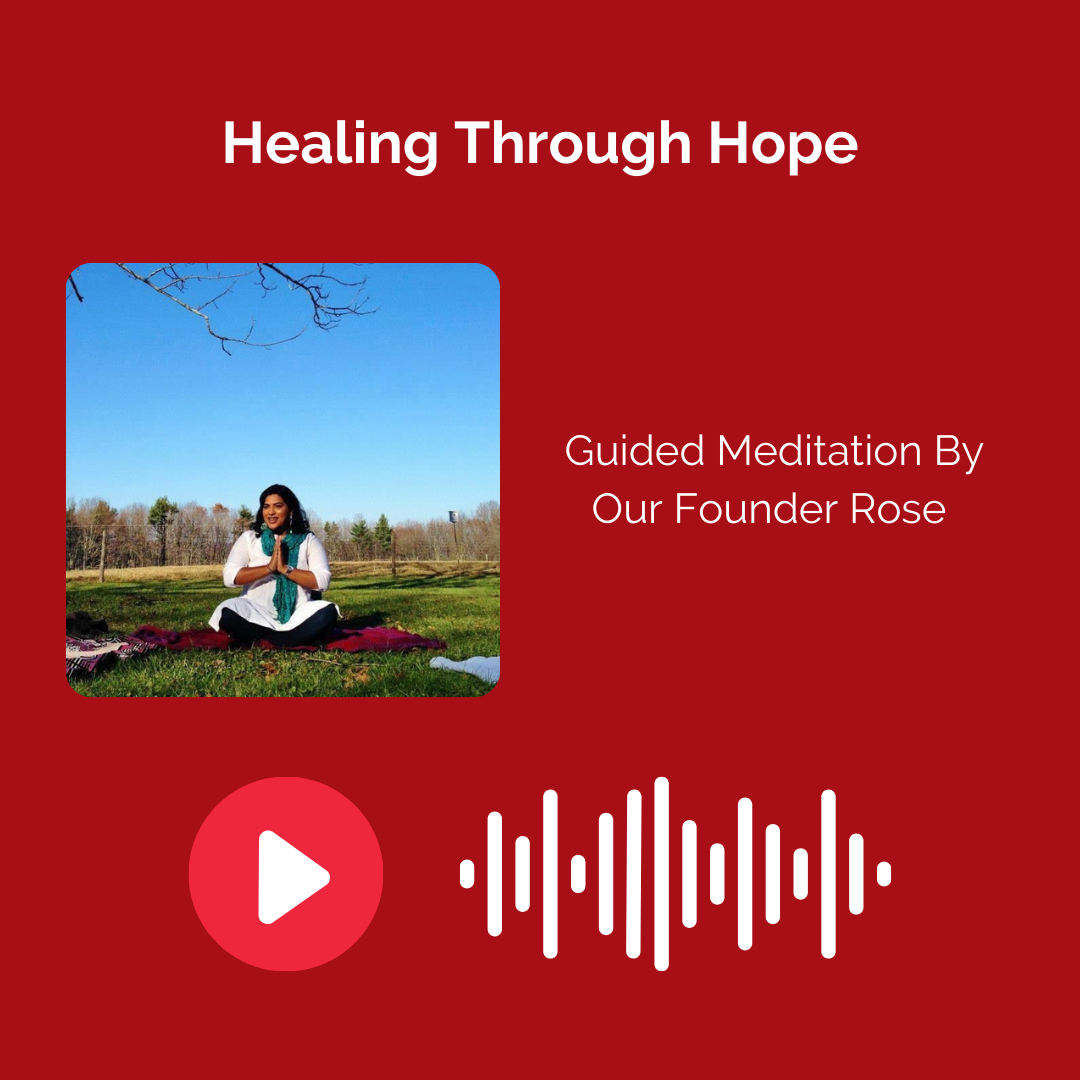
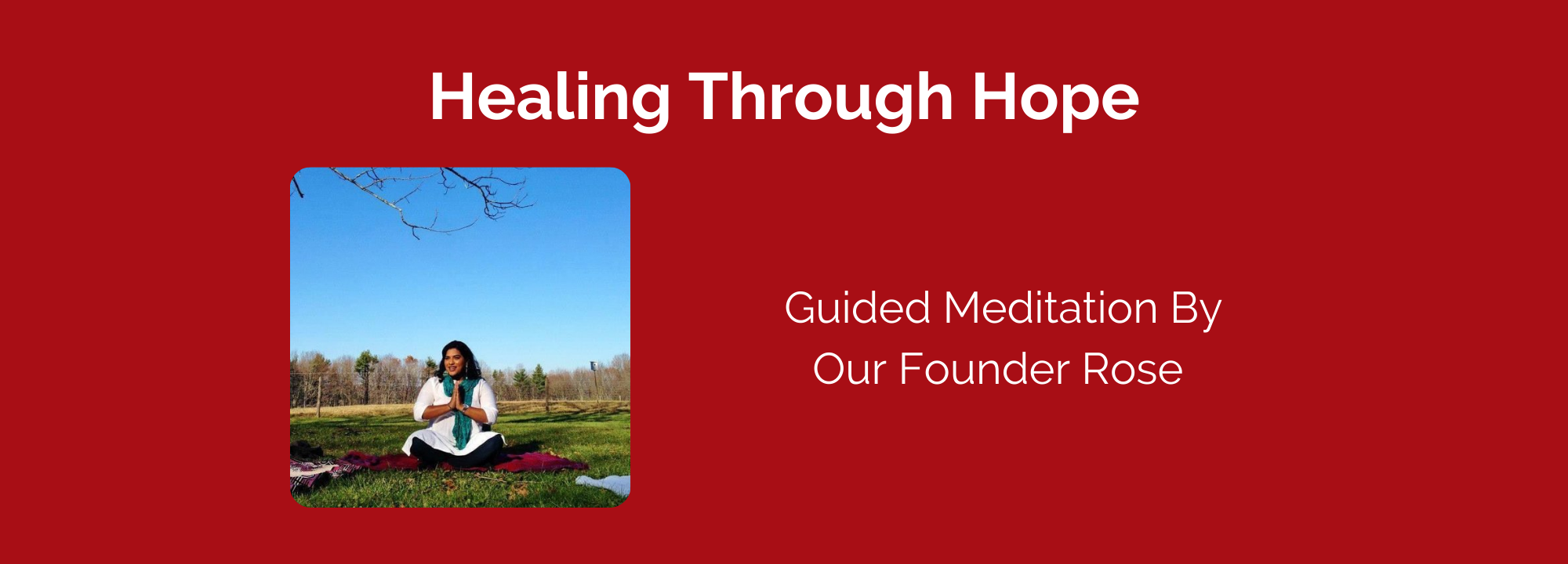


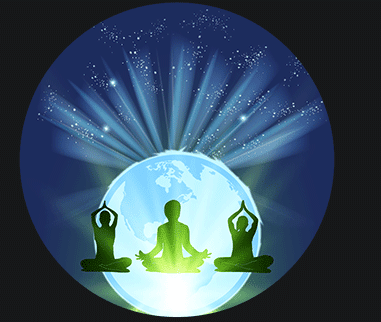
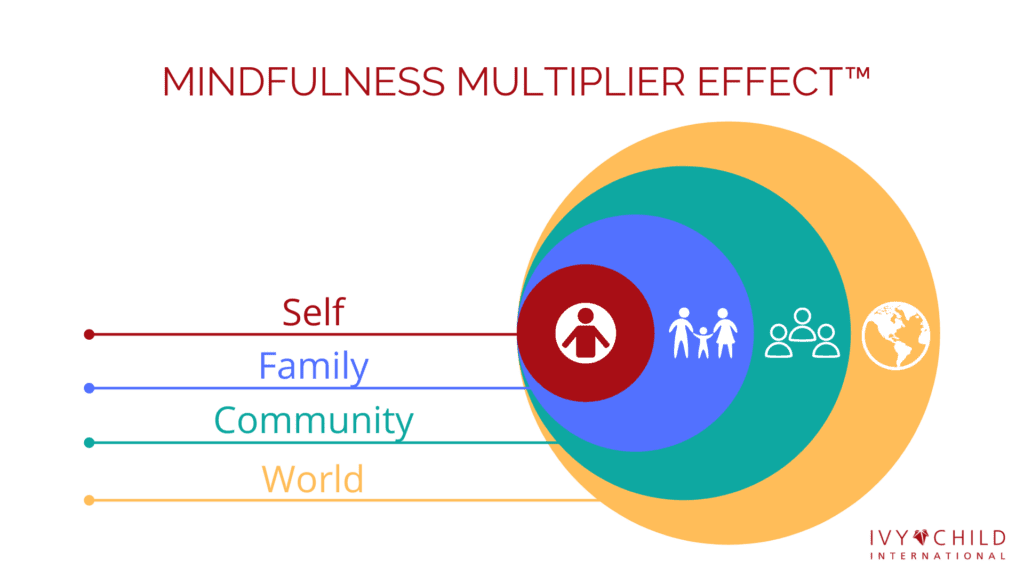 At the heart of Ivy Child’s mission, we believe that when you provide any individual access to learn and practice mindfulness, it not only enhances their direct well-being, it also ripples out to benefit all of those in their outer world (SELF, FAMILY, COMMUNITY, WORLD).
At the heart of Ivy Child’s mission, we believe that when you provide any individual access to learn and practice mindfulness, it not only enhances their direct well-being, it also ripples out to benefit all of those in their outer world (SELF, FAMILY, COMMUNITY, WORLD).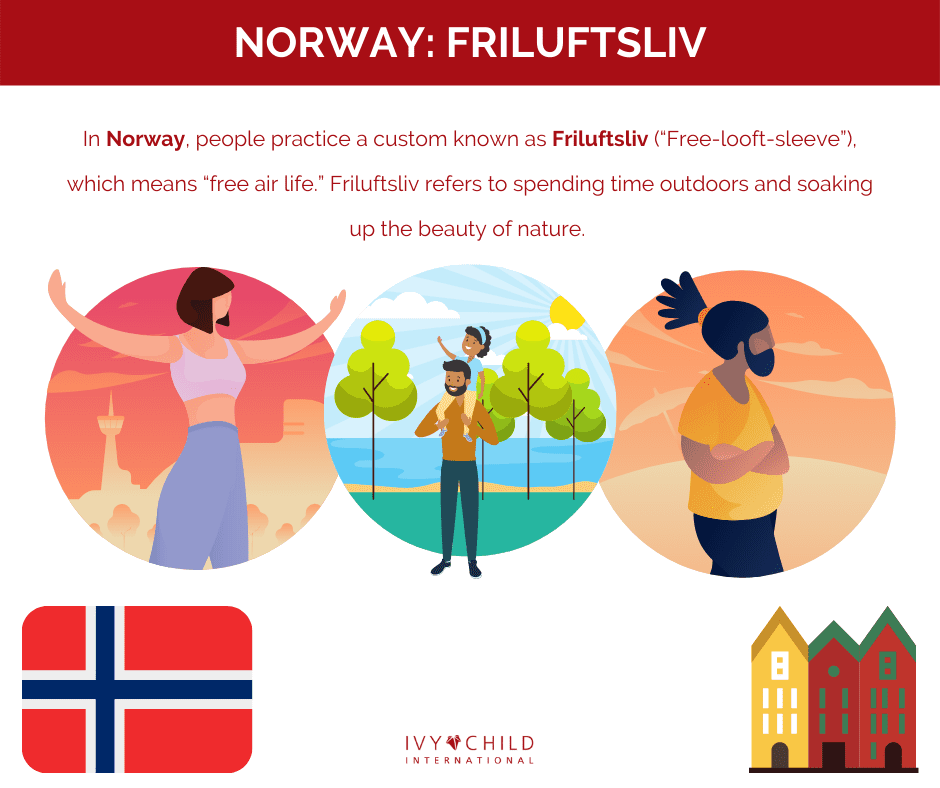 In Norway, people practice a custom known as Friluftsliv (“Free-looft-sleeve”), which means “free air life”. Friluftsliv refers to spending time outdoors and soaking up the beauty of nature.
In Norway, people practice a custom known as Friluftsliv (“Free-looft-sleeve”), which means “free air life”. Friluftsliv refers to spending time outdoors and soaking up the beauty of nature. In Turkey, people value the experience of Keyif (“kay-eef”). This is the art of quiet relaxation and living in the moment.
In Turkey, people value the experience of Keyif (“kay-eef”). This is the art of quiet relaxation and living in the moment.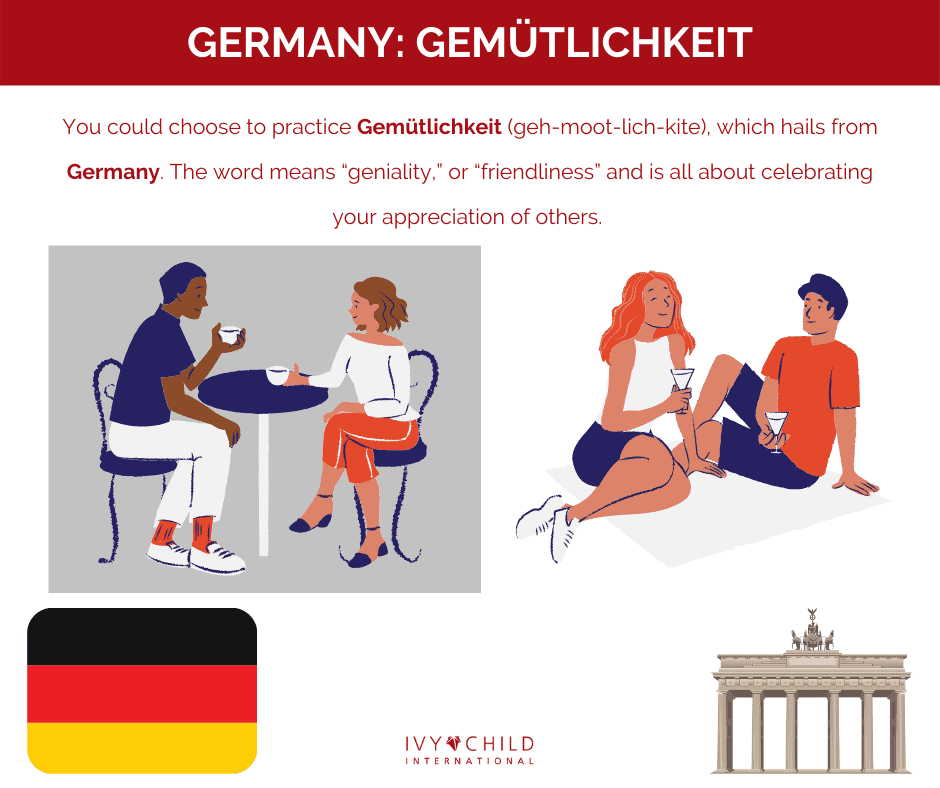 You could choose to practice Gemütlichkeit (geh-moot-lich-kite), which hails from Germany. The word means “geniality,” or “friendliness” and is all about celebrating your appreciation of others.
You could choose to practice Gemütlichkeit (geh-moot-lich-kite), which hails from Germany. The word means “geniality,” or “friendliness” and is all about celebrating your appreciation of others.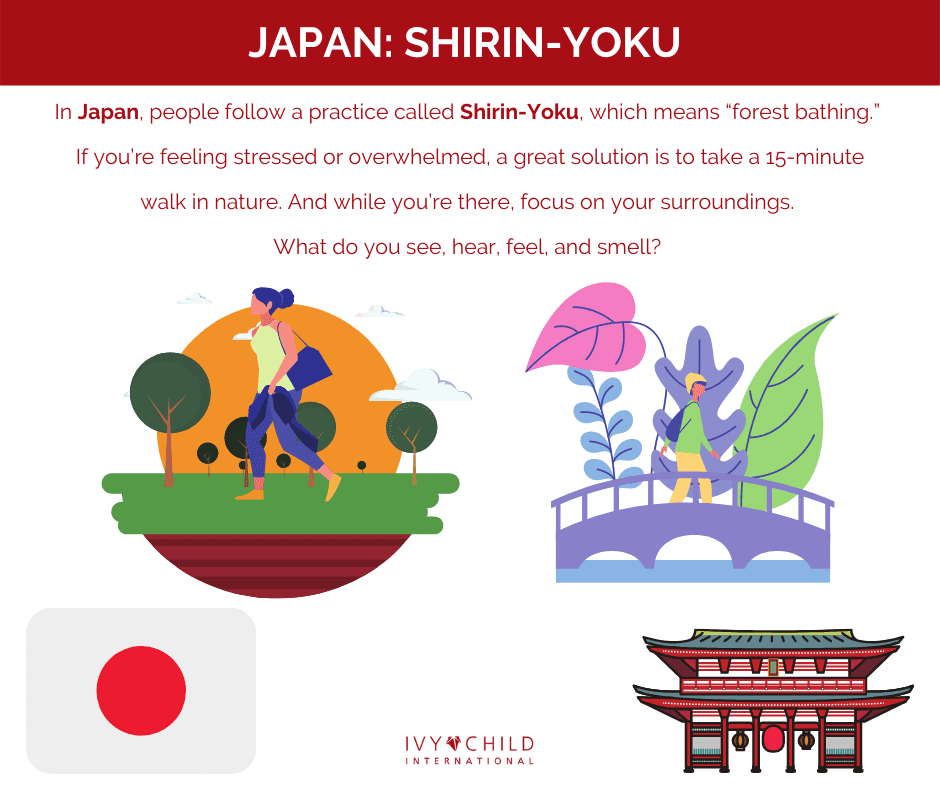 In Japan, people follow a practice called Shirin-Yoku, which means “forest bathing.”
In Japan, people follow a practice called Shirin-Yoku, which means “forest bathing.”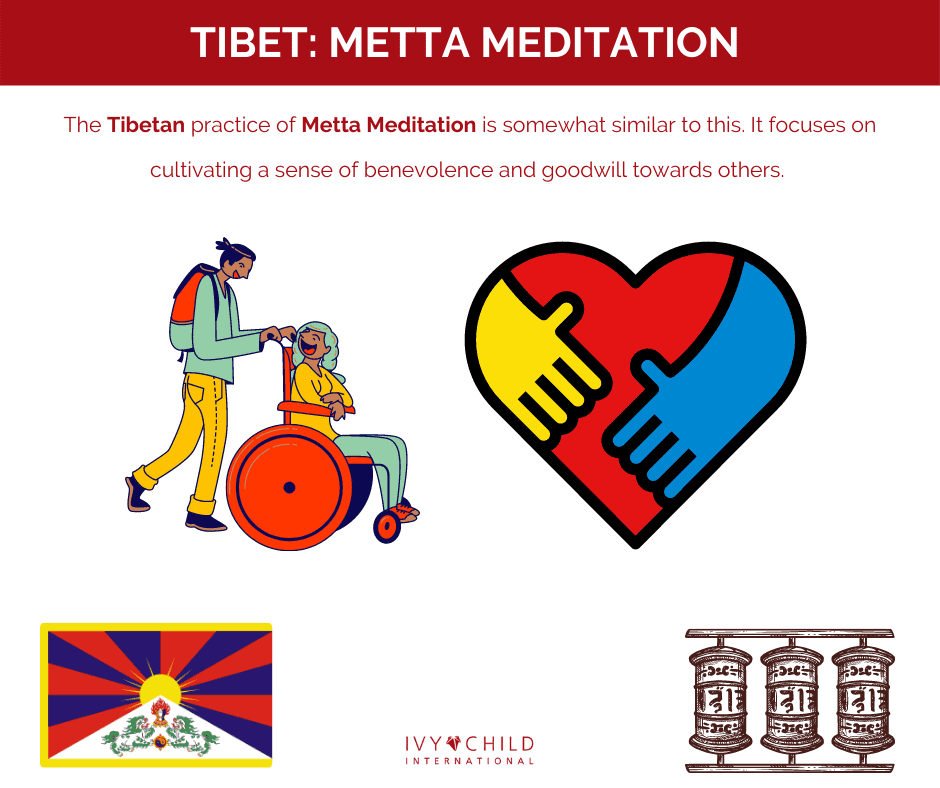 The Tibetan practice of Metta meditation is somewhat similar to this. It focuses on cultivating a sense of benevolence and goodwill towards others.
The Tibetan practice of Metta meditation is somewhat similar to this. It focuses on cultivating a sense of benevolence and goodwill towards others. This is also called as a forgiveness and reconciliation practice. The word, Ho’oponopono means “to make right.” At the surface level, it’s about reciting the mantra, “I’m sorry, please forgive me, thank you, I love you.” This ancient Hawaiian practice of forgiveness functions as both a communication concept for reconciliation and a tool for restoring self-love and balance.
This is also called as a forgiveness and reconciliation practice. The word, Ho’oponopono means “to make right.” At the surface level, it’s about reciting the mantra, “I’m sorry, please forgive me, thank you, I love you.” This ancient Hawaiian practice of forgiveness functions as both a communication concept for reconciliation and a tool for restoring self-love and balance.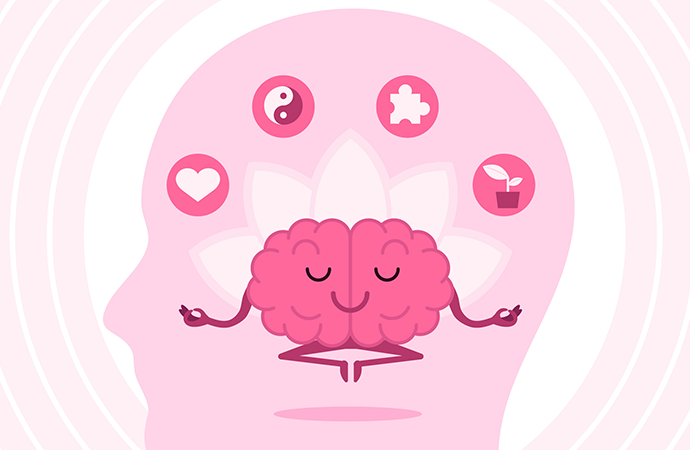
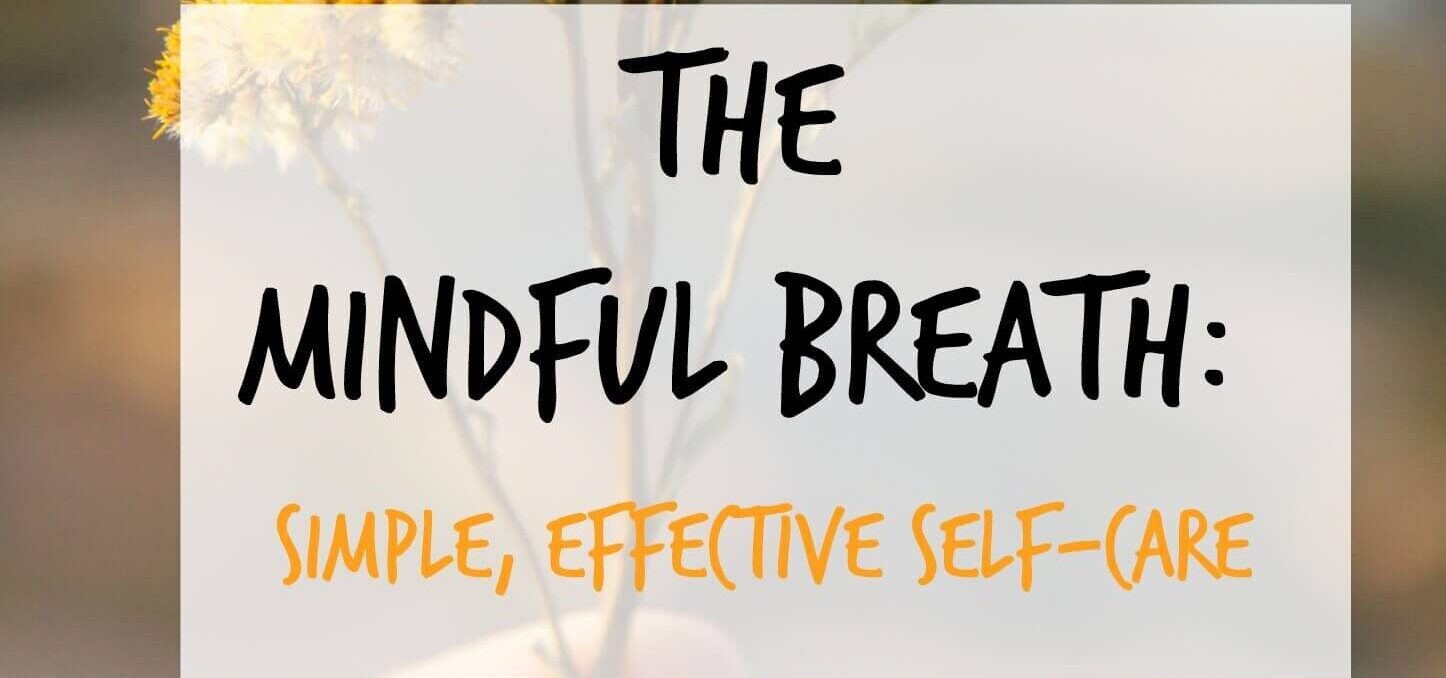
 1. Customizing a Self-Care Plan is a preventative measure. By designing a roadmap that is unique to you, in moments when you’re NOT in crisis, you’re directing your best self to reflect on what you may need (and have access to) in your worst moments. The reality is that only YOU know how intense your stress levels can get and what resources are available to you.
1. Customizing a Self-Care Plan is a preventative measure. By designing a roadmap that is unique to you, in moments when you’re NOT in crisis, you’re directing your best self to reflect on what you may need (and have access to) in your worst moments. The reality is that only YOU know how intense your stress levels can get and what resources are available to you.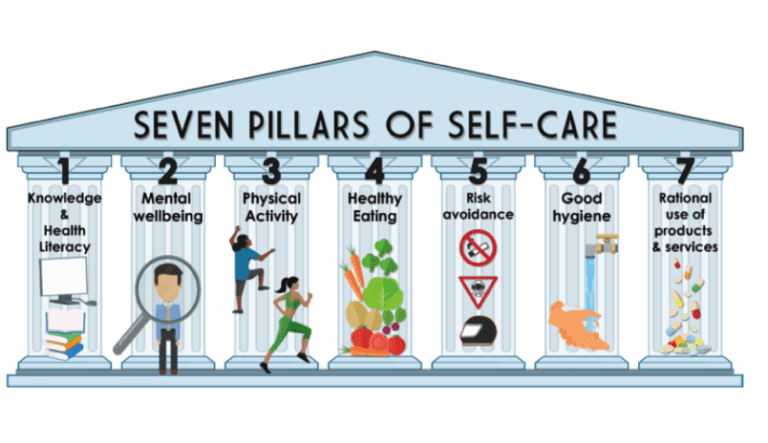 1.Health literacy – includes: the capacity of individuals to obtain, process and understand basic health information and services needed to make appropriate health decisions.
1.Health literacy – includes: the capacity of individuals to obtain, process and understand basic health information and services needed to make appropriate health decisions.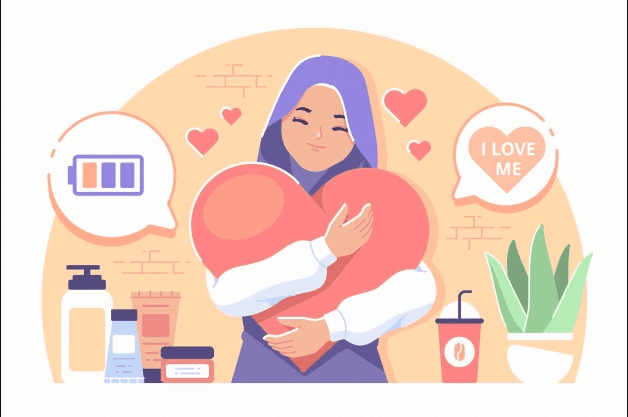 3. Get outdoors. If you are blessed to live in a place where there are parks or waterfronts (that are not closed during the pandemic) and you can access them with walks, runs, and bikes, it’s a blessing that should not be squandered. Each day commit to getting outdoors and moving for at least an hour, including taking a barefoot walk on grass.
3. Get outdoors. If you are blessed to live in a place where there are parks or waterfronts (that are not closed during the pandemic) and you can access them with walks, runs, and bikes, it’s a blessing that should not be squandered. Each day commit to getting outdoors and moving for at least an hour, including taking a barefoot walk on grass. At the heart of Ivy Child’s mission, we believe that when you provide any individual access to learn and practice mindfulness, it not only enhances their direct well-being, it also ripples out to benefit all of those in their outer world.
At the heart of Ivy Child’s mission, we believe that when you provide any individual access to learn and practice mindfulness, it not only enhances their direct well-being, it also ripples out to benefit all of those in their outer world.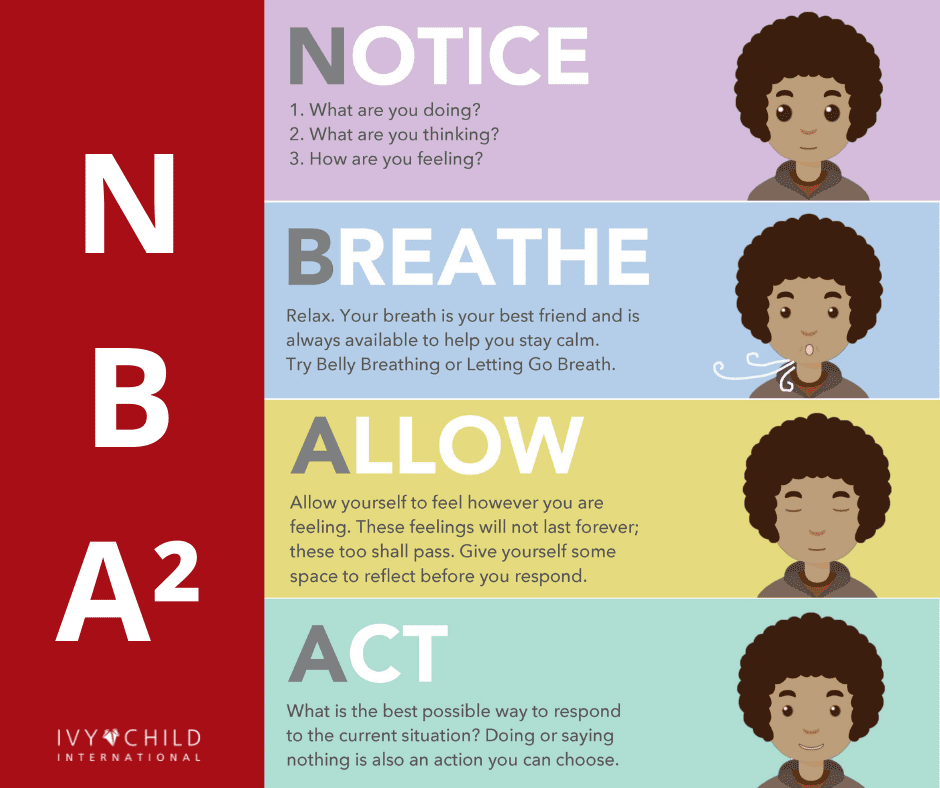 This simple mindfulness practice, helps us notice, breathe, allow, and take positive action. Follow along to widen the gap between the impulse to react and choosing how you want to respond.
This simple mindfulness practice, helps us notice, breathe, allow, and take positive action. Follow along to widen the gap between the impulse to react and choosing how you want to respond.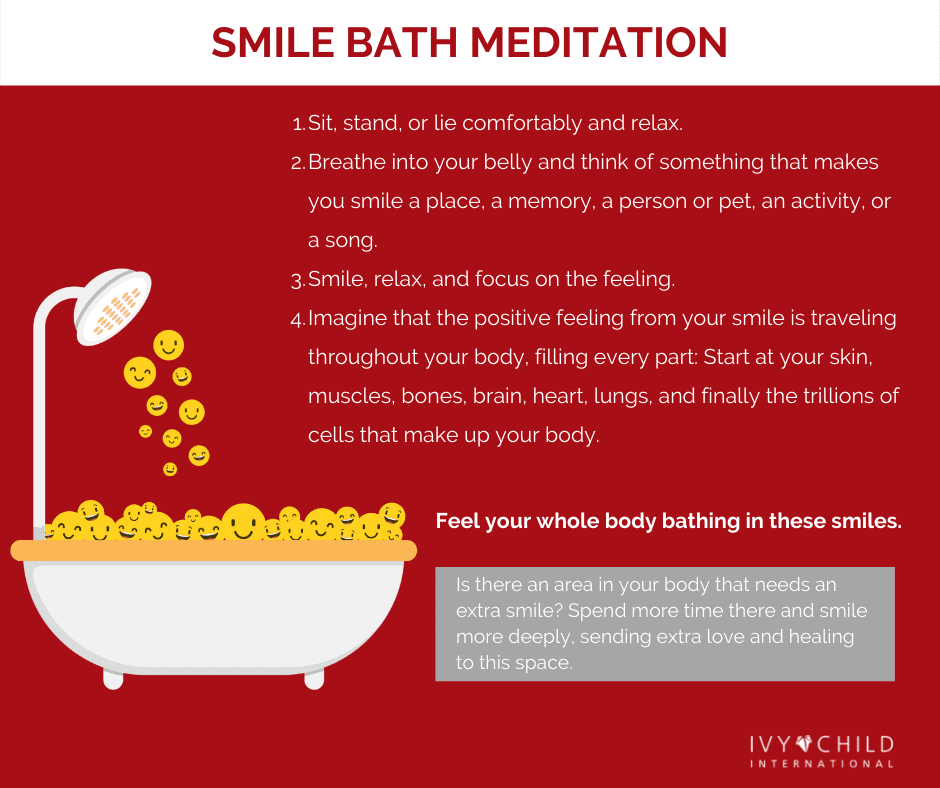
 Anxiety is commonly associated with short, tight upper-chest breathing whereas relaxation, on the other hand, comes with slower breaths that originate from the diaphragm. Lengthening exhalation relative to inhalation reduces the ‘fight or flight’ impulse and maintains a healthy level of carbon dioxide in the blood, which helps you relax.
Anxiety is commonly associated with short, tight upper-chest breathing whereas relaxation, on the other hand, comes with slower breaths that originate from the diaphragm. Lengthening exhalation relative to inhalation reduces the ‘fight or flight’ impulse and maintains a healthy level of carbon dioxide in the blood, which helps you relax.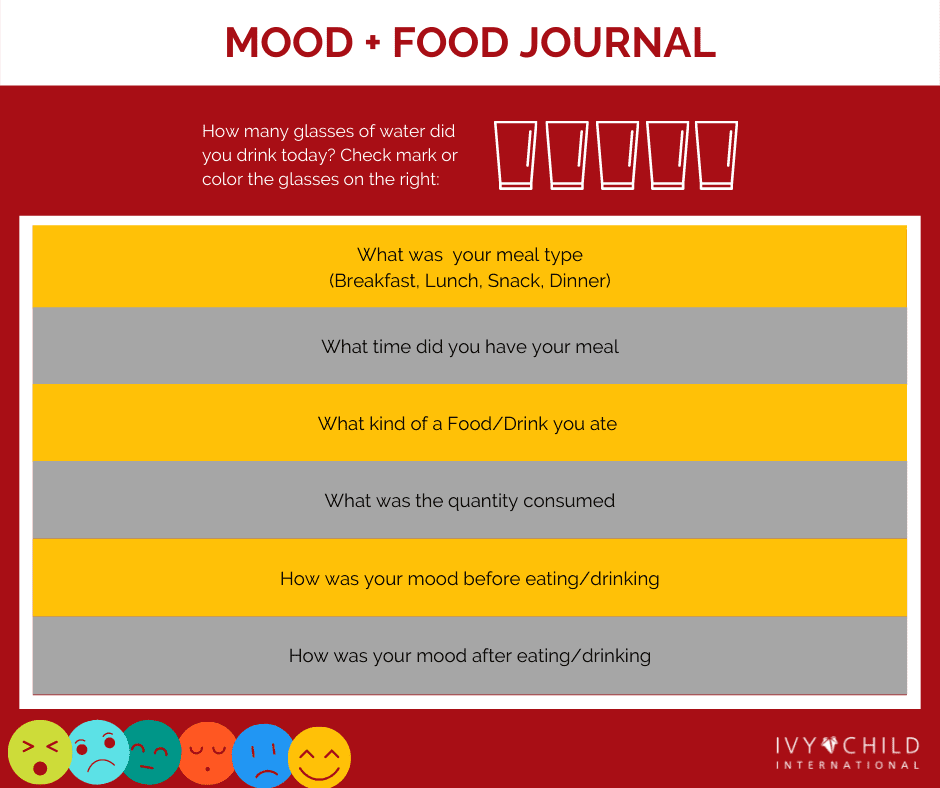 Ever feel down and just don’t know why? Do you know the TYPE of food you eat, and HOW you eat, directly affects your physical and emotional well-being? Research shows a clear connection between the food you eat and the gut microbiome, your inner eco system that governs your mood.
Ever feel down and just don’t know why? Do you know the TYPE of food you eat, and HOW you eat, directly affects your physical and emotional well-being? Research shows a clear connection between the food you eat and the gut microbiome, your inner eco system that governs your mood. Starfish meditation is a way to build resilience to stress, anxiety and anger. Since all these reactions can impair not only our health but also our judgment and skills of attention. Several researchers & practitioners suggest that practicing starfish meditation is an effective way to deal with difficult feelings.
Starfish meditation is a way to build resilience to stress, anxiety and anger. Since all these reactions can impair not only our health but also our judgment and skills of attention. Several researchers & practitioners suggest that practicing starfish meditation is an effective way to deal with difficult feelings.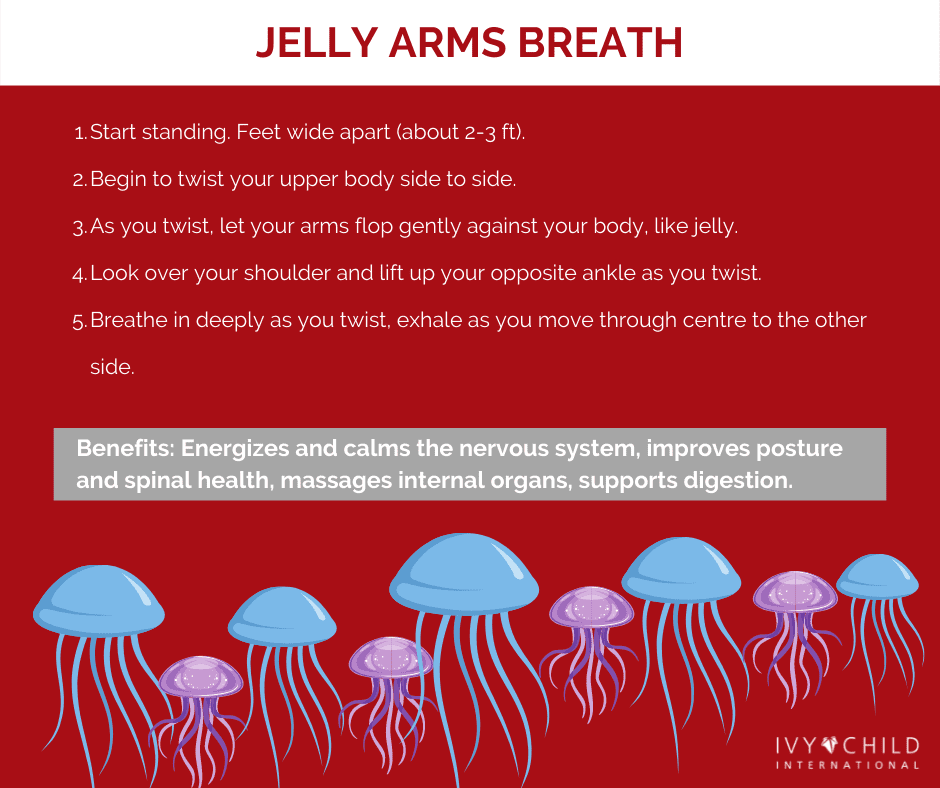 Jelly Arm Breath technique is part of Kundalini yoga and is meant to move energy through the body. It is based on the concept that energy at the base of the spine (also known as the root chakra) needs to be released through the seven chakras of the body and then out through the crown chakra above the head.
Jelly Arm Breath technique is part of Kundalini yoga and is meant to move energy through the body. It is based on the concept that energy at the base of the spine (also known as the root chakra) needs to be released through the seven chakras of the body and then out through the crown chakra above the head.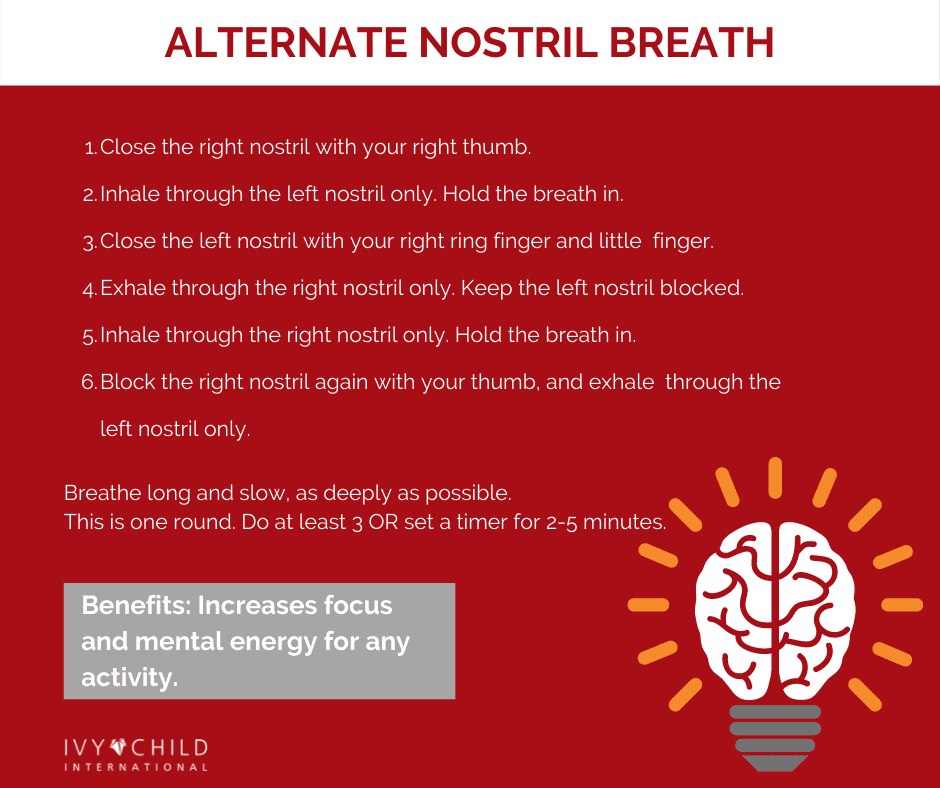 Alternate nostril breathing is a yogic breath control practice. In Sanskrit, it’s known as nadi shodhana pranayama. This translates as “subtle energy clearing breathing technique.”
Alternate nostril breathing is a yogic breath control practice. In Sanskrit, it’s known as nadi shodhana pranayama. This translates as “subtle energy clearing breathing technique.”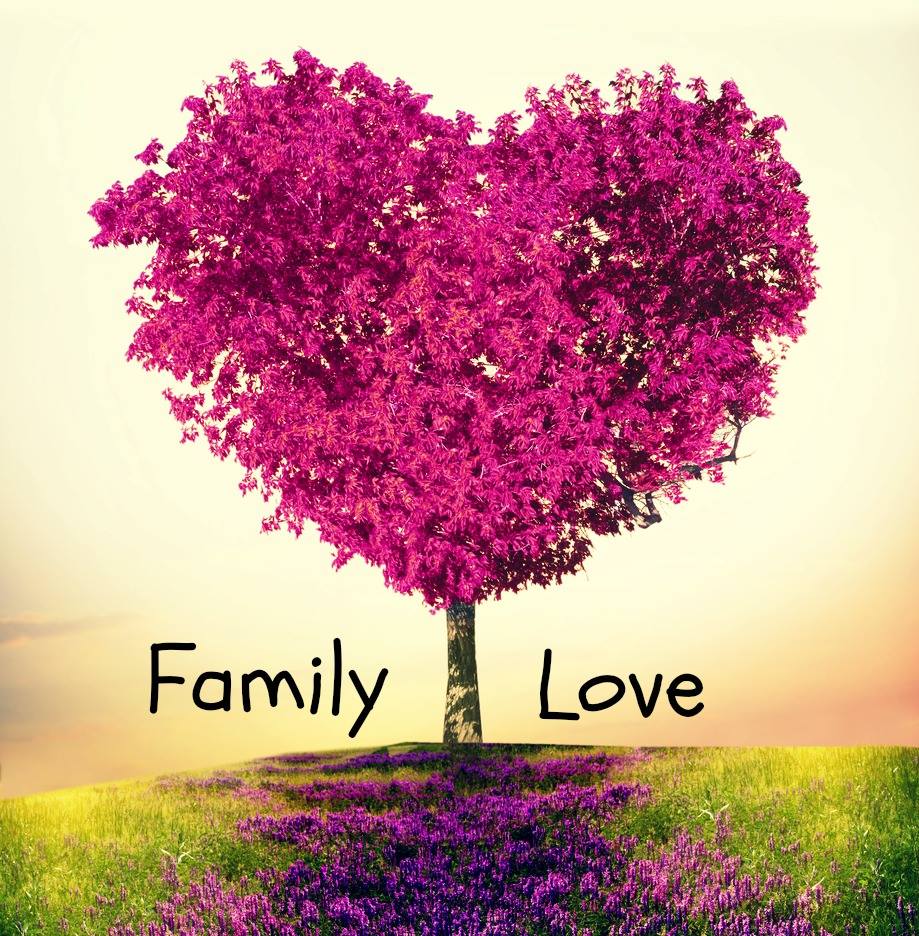
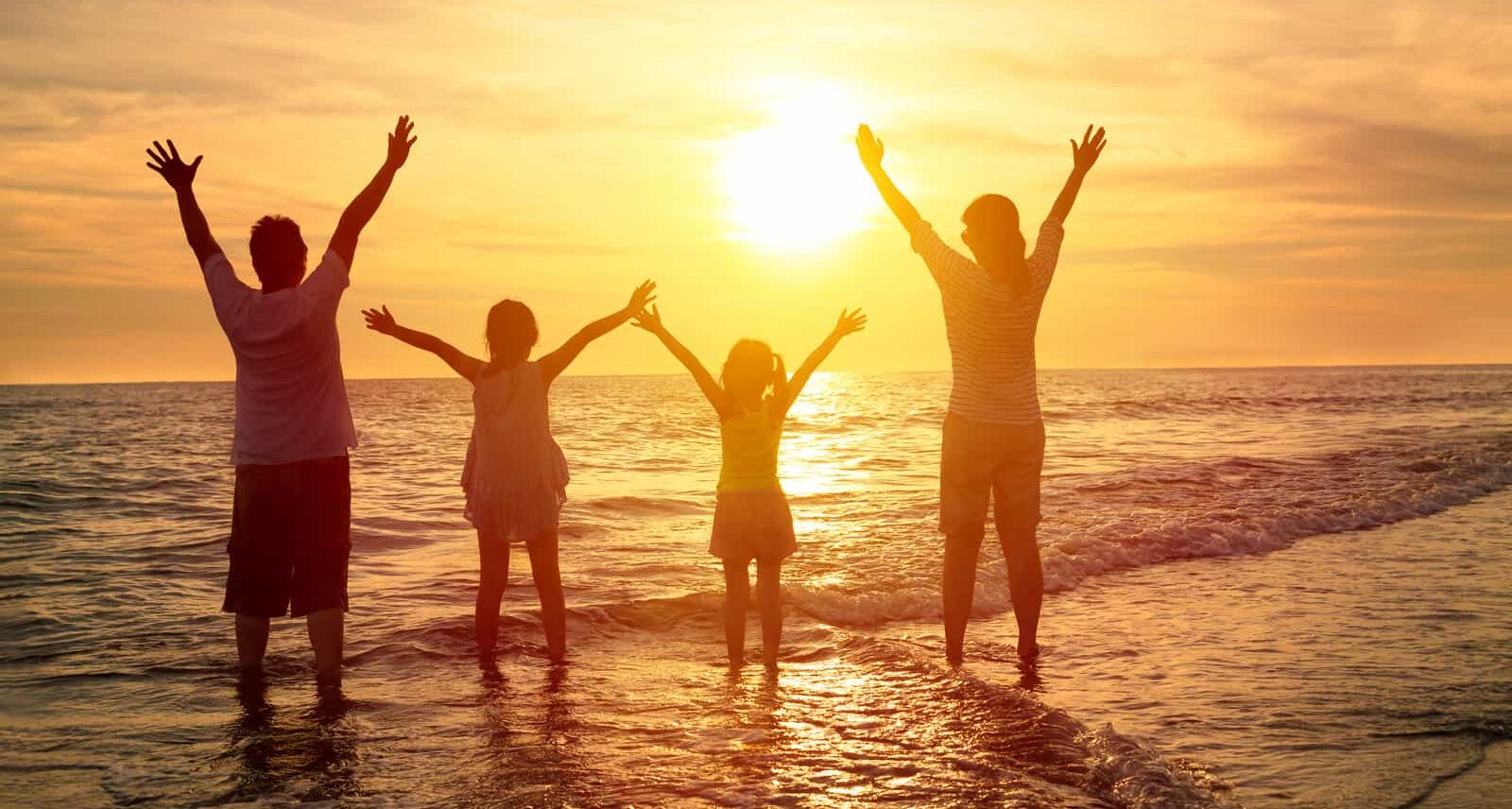

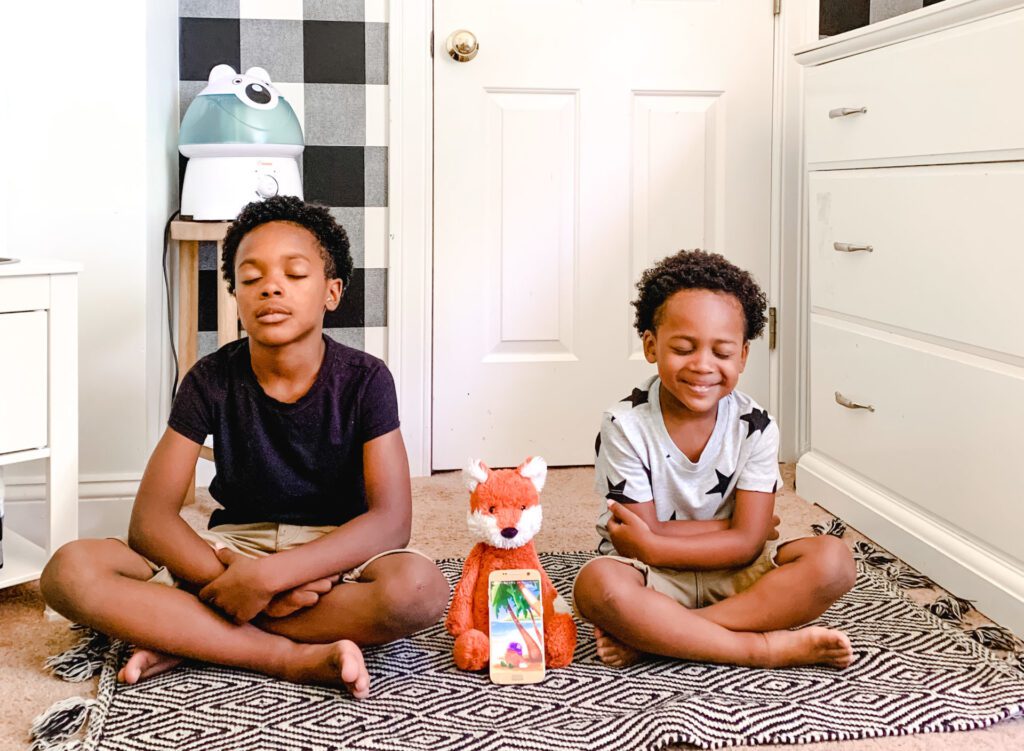
 Mindfulness is a gift that you can offer yourself. By first giving the gift of Mindfulness to yourself you can then watch it spread to others. From Mindfulness with yourself, you inherently bring Mindfulness to everything you do and everyone you meet. This is the Mindful multiplier e
Mindfulness is a gift that you can offer yourself. By first giving the gift of Mindfulness to yourself you can then watch it spread to others. From Mindfulness with yourself, you inherently bring Mindfulness to everything you do and everyone you meet. This is the Mindful multiplier e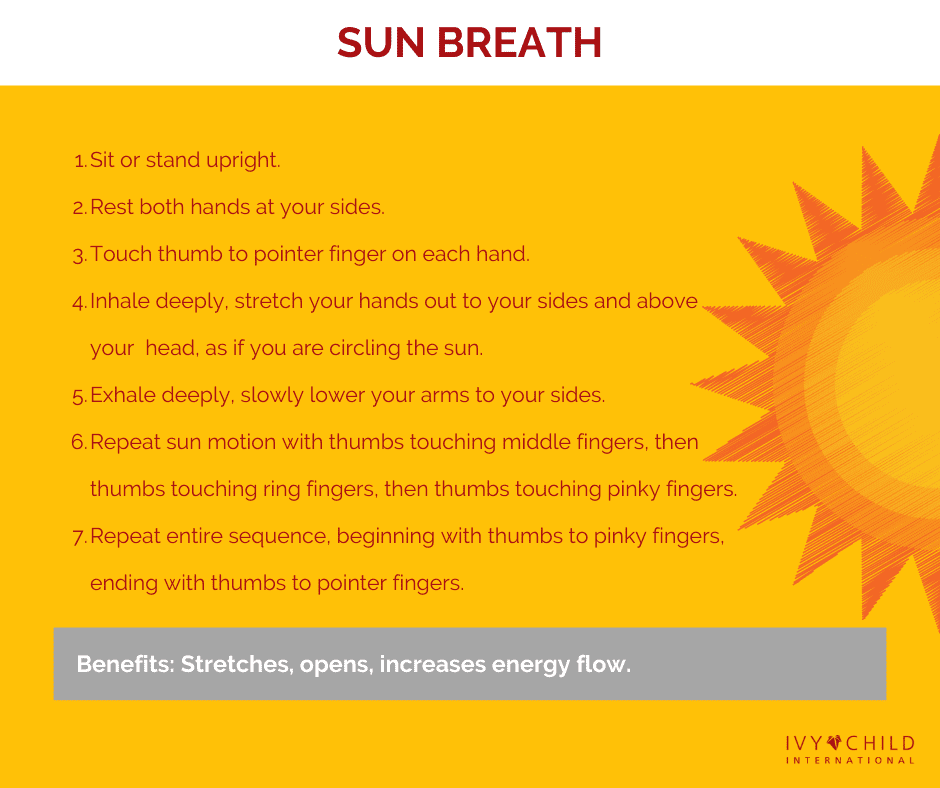 Sun Breath mindfulness is a dynamic sequence that focuses on the flow of arms with the breath. The breathing pattern (inhalation-hold-exhalation-hold) guides the movement of the arms that acts as a tool to bring more awareness to the body and breath. People who are new to yoga can be introduced to this kind of breathing, which helps them make faster connections to the sensations, feelings, and emotions felt during this dynamic Sun Breaths practice.
Sun Breath mindfulness is a dynamic sequence that focuses on the flow of arms with the breath. The breathing pattern (inhalation-hold-exhalation-hold) guides the movement of the arms that acts as a tool to bring more awareness to the body and breath. People who are new to yoga can be introduced to this kind of breathing, which helps them make faster connections to the sensations, feelings, and emotions felt during this dynamic Sun Breaths practice.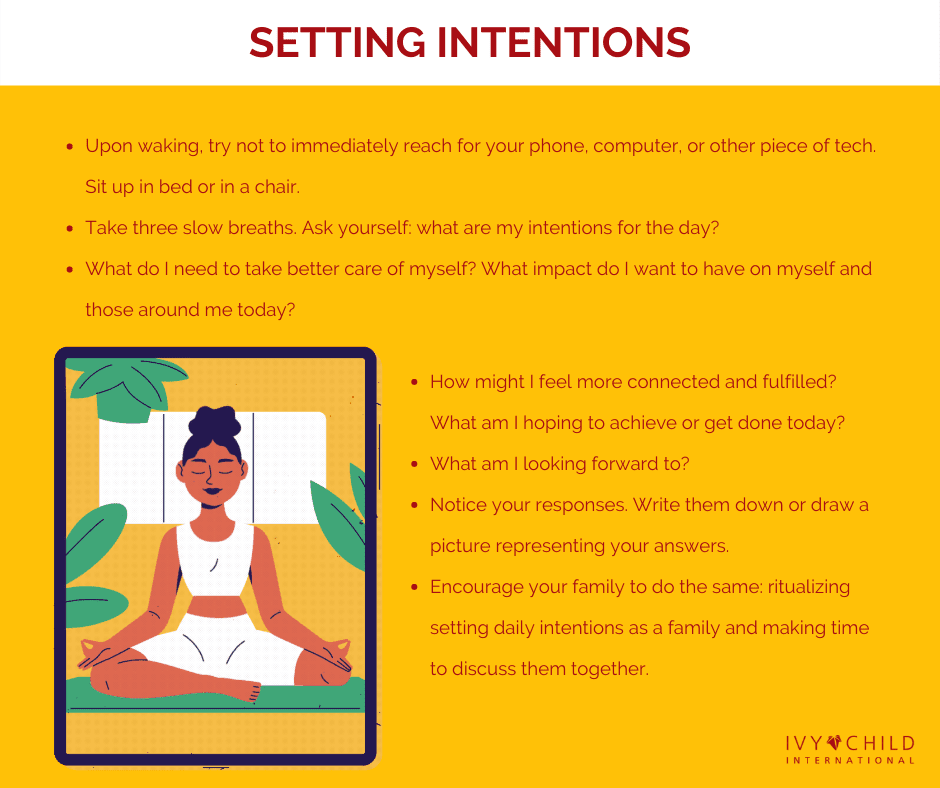 An intention is a guiding principle for how you want to be, live, and show up in the world — whether at work, in relationships, during your meditation, or in any area of your life. Ask yourself, what matters most to you? Your answer could form a powerful intention, for which you can align your thoughts and attitude for the day ahead. Having a clear intention with you at your fingertips can help guide your actions as you move through the day.
An intention is a guiding principle for how you want to be, live, and show up in the world — whether at work, in relationships, during your meditation, or in any area of your life. Ask yourself, what matters most to you? Your answer could form a powerful intention, for which you can align your thoughts and attitude for the day ahead. Having a clear intention with you at your fingertips can help guide your actions as you move through the day. Happy place meditation technique focus your mind to take you to a place where you can they feel happy, calm and at peace in times of high stress or anxiety, a stress management strategy that would give some control over your thoughts in a time where you feel nothing but out of control.
Happy place meditation technique focus your mind to take you to a place where you can they feel happy, calm and at peace in times of high stress or anxiety, a stress management strategy that would give some control over your thoughts in a time where you feel nothing but out of control. Being aware of what we are experiencing at a given moment, our sensations, thoughts and feelings, has been shown to enhance wellbeing.
Being aware of what we are experiencing at a given moment, our sensations, thoughts and feelings, has been shown to enhance wellbeing.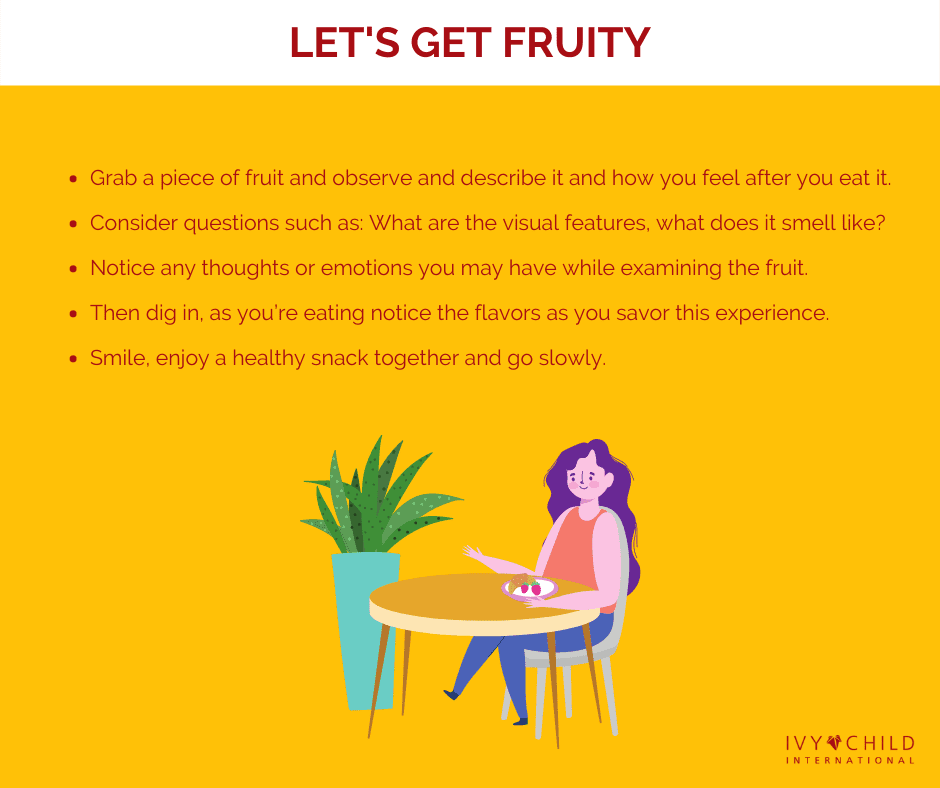 Fruity mindfulness is a way to practice mindfulness in order to overcome negative thoughts and feelings. The following simple exercise teaches us how eating fruit can help us to be more mindful and invites us to bring mindful awareness to activities we may already do in everyday life.
Fruity mindfulness is a way to practice mindfulness in order to overcome negative thoughts and feelings. The following simple exercise teaches us how eating fruit can help us to be more mindful and invites us to bring mindful awareness to activities we may already do in everyday life.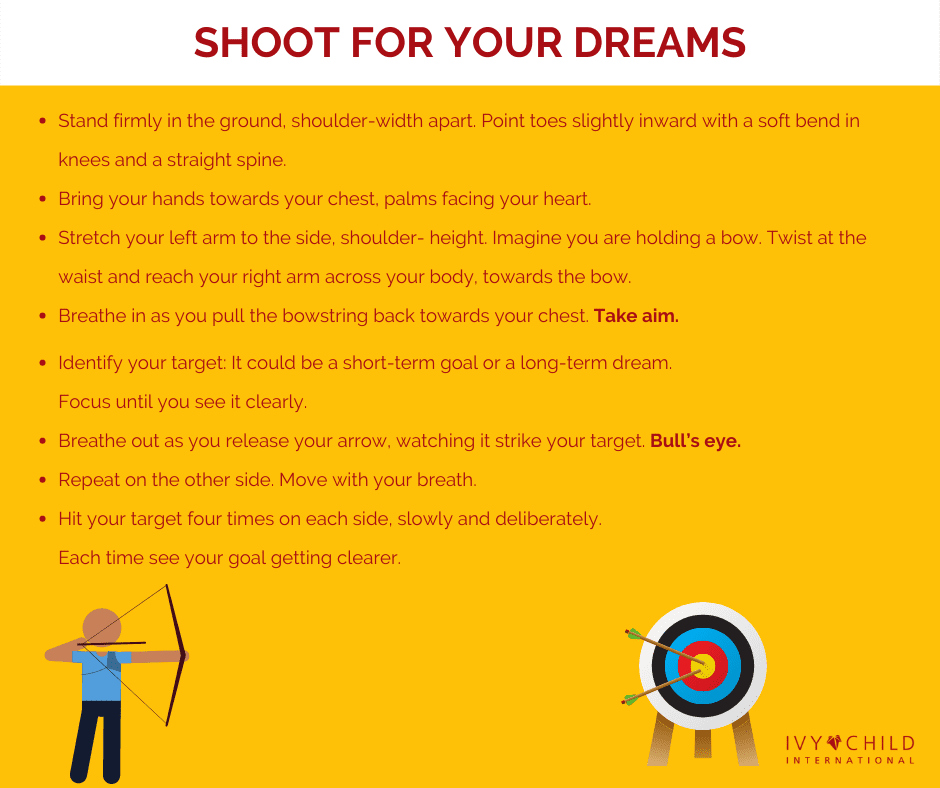 Mindfulness / Meditation is a proven method of relaxing both the mind and the body.
Mindfulness / Meditation is a proven method of relaxing both the mind and the body.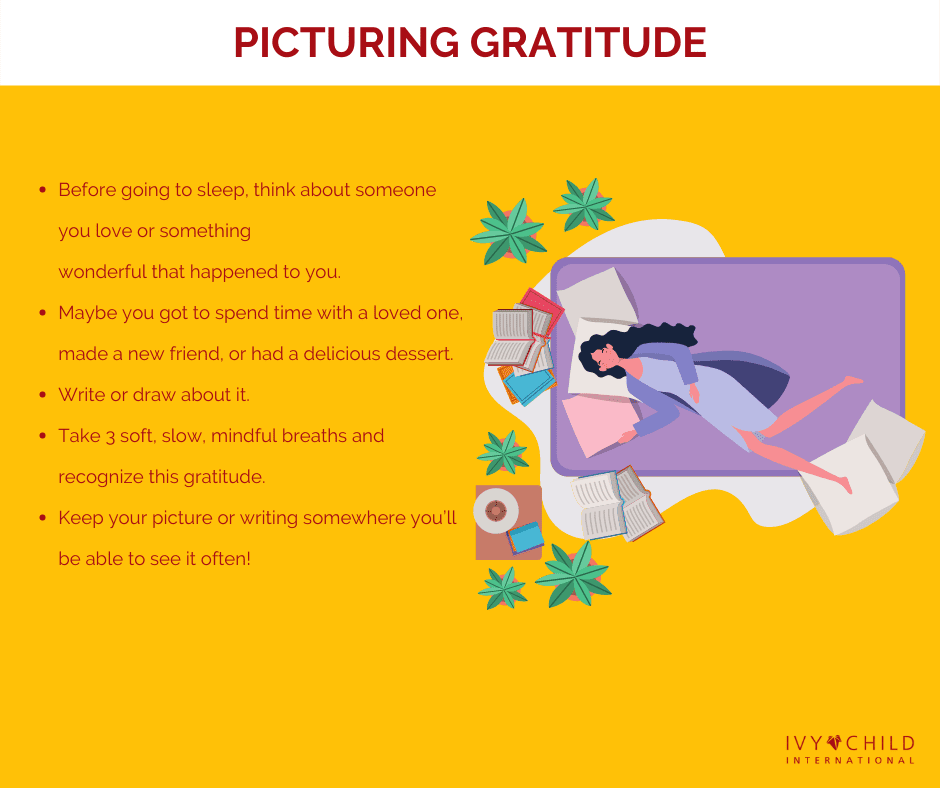 We say “thanks” a dozen or more times a day: when someone holds a door open, bags our groceries, puts a report on our desk. It’s a reflex, an almost knee-jerk reaction to simple daily transactions. We mutter it, often without really acknowledging the person we’re thanking.
We say “thanks” a dozen or more times a day: when someone holds a door open, bags our groceries, puts a report on our desk. It’s a reflex, an almost knee-jerk reaction to simple daily transactions. We mutter it, often without really acknowledging the person we’re thanking.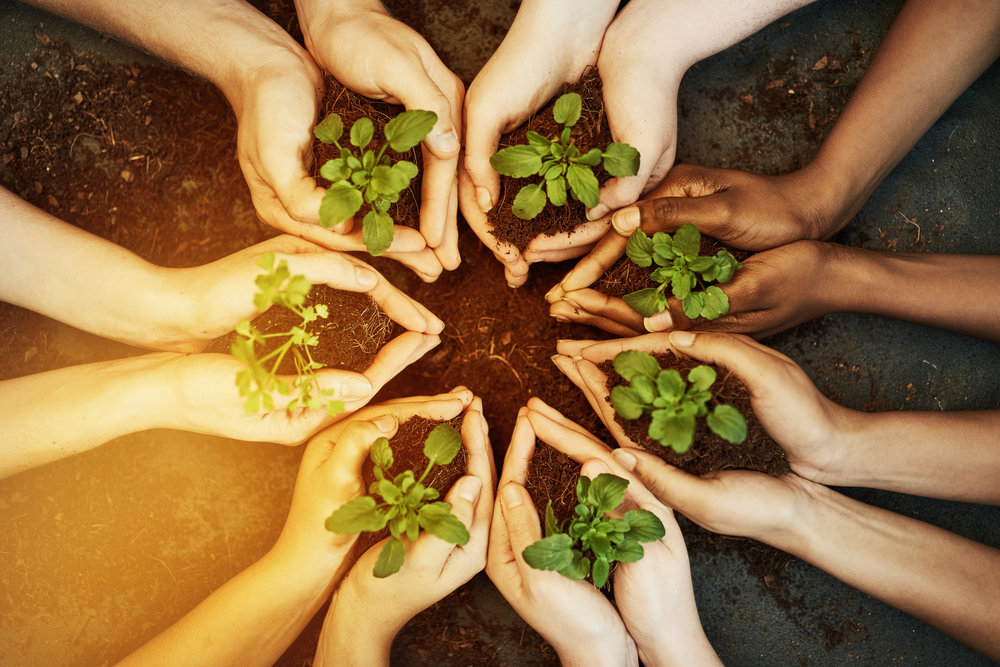

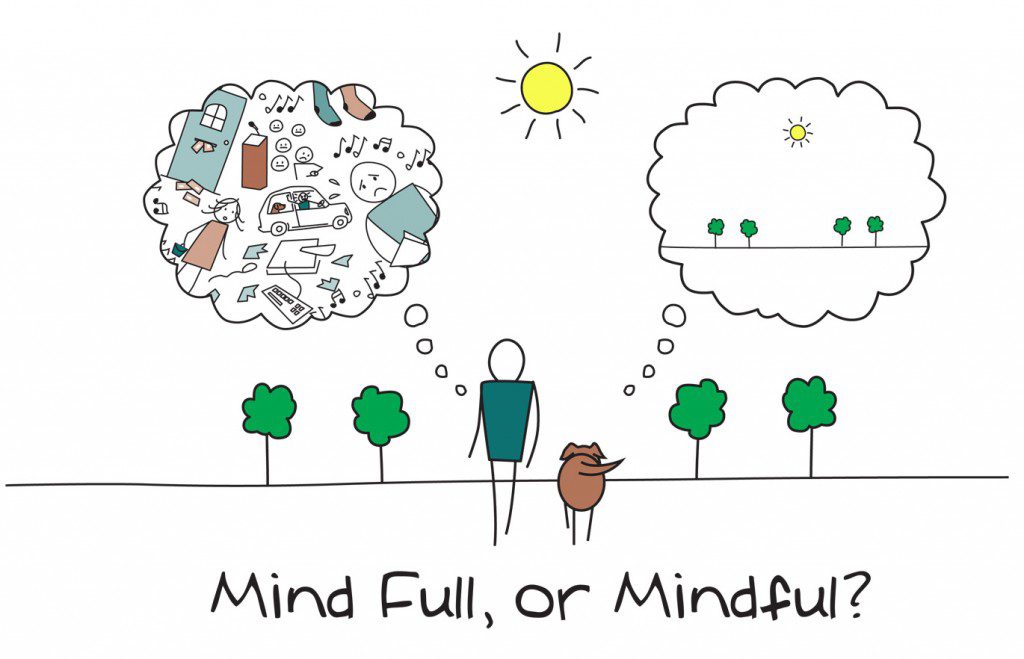
 Mindfulness teaches you to stay aware of your present moment, but this practice effects more than just yourself. Presence is a gift that you can offer yourself. By first giving the gift of presence to yourself you can then watch it spread to others. From presence with yourself, you inherently bring presence to everything you do and everyone you meet.
Mindfulness teaches you to stay aware of your present moment, but this practice effects more than just yourself. Presence is a gift that you can offer yourself. By first giving the gift of presence to yourself you can then watch it spread to others. From presence with yourself, you inherently bring presence to everything you do and everyone you meet.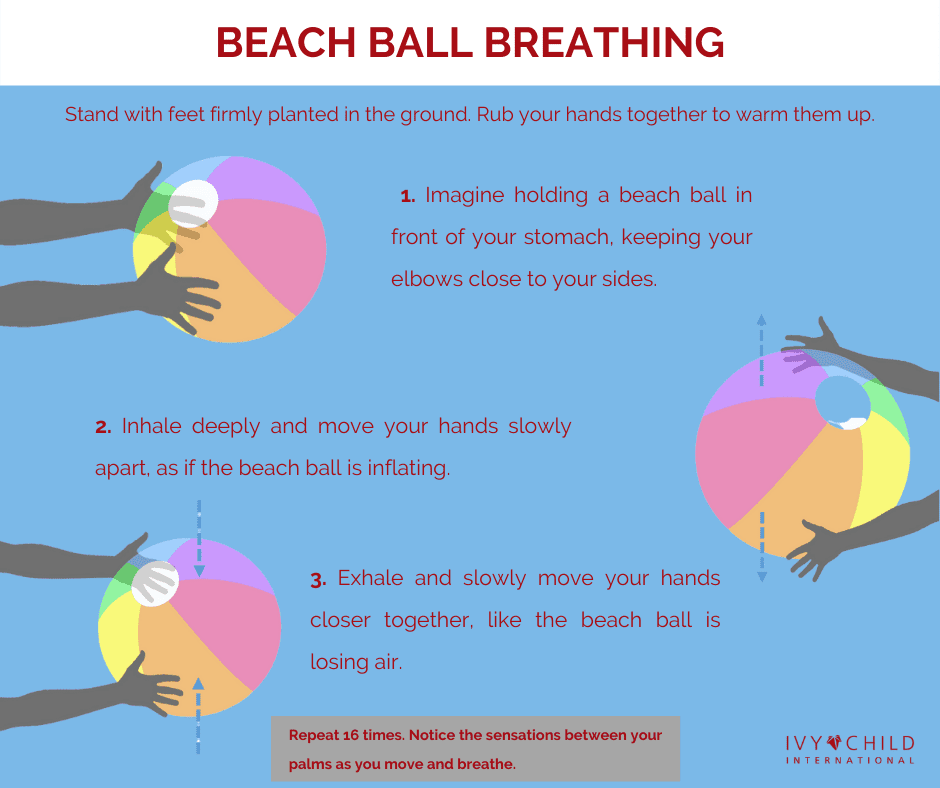 When we are stressed-out, sad, anxious, irritated, or angry, we typically want those feelings to just disappear. This is natural. It can be difficult to sit with uncomfortable emotions, especially when we feel like there’s no way out. We might try to drown them out with Netflix, work, exercise, or Oreos. Or maybe we try to blast out the blues with positive affirmations or pep talks in the mirror.
When we are stressed-out, sad, anxious, irritated, or angry, we typically want those feelings to just disappear. This is natural. It can be difficult to sit with uncomfortable emotions, especially when we feel like there’s no way out. We might try to drown them out with Netflix, work, exercise, or Oreos. Or maybe we try to blast out the blues with positive affirmations or pep talks in the mirror.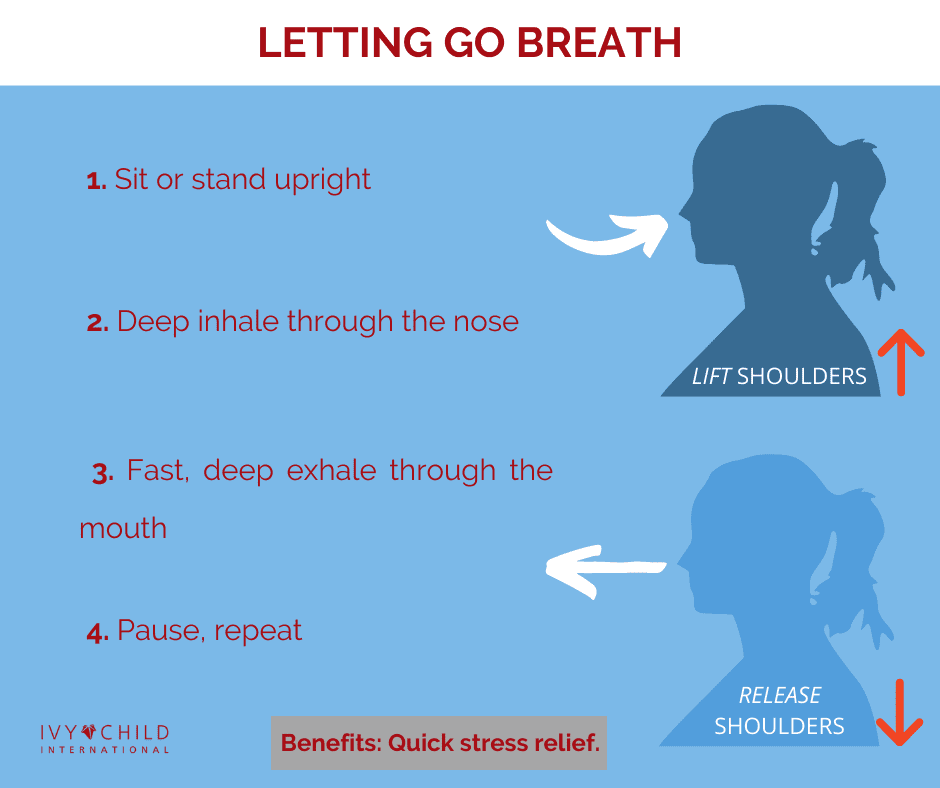 Connecting with the breath is a tool to help prevent the nervous system from jolting into sympathetic nervous system dominance. But you can still overcome this impulse with the “letting go breath”—a quick reboot you can practice anywhere.
Connecting with the breath is a tool to help prevent the nervous system from jolting into sympathetic nervous system dominance. But you can still overcome this impulse with the “letting go breath”—a quick reboot you can practice anywhere.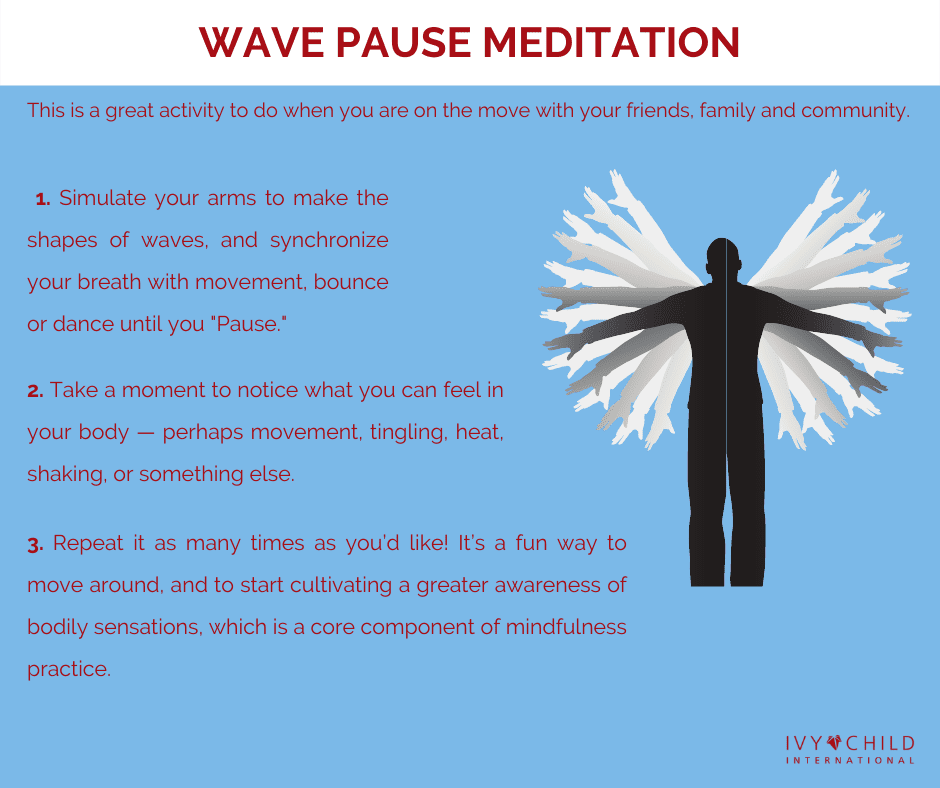 For many people, movement (bouncing, running, fidgeting, skipping) is a natural state of being. Many times, when we ask someone to “pay attention,” what we are really saying is “stop moving,” but physical movement has such a positive impact on the emotional well-being of a person.
For many people, movement (bouncing, running, fidgeting, skipping) is a natural state of being. Many times, when we ask someone to “pay attention,” what we are really saying is “stop moving,” but physical movement has such a positive impact on the emotional well-being of a person.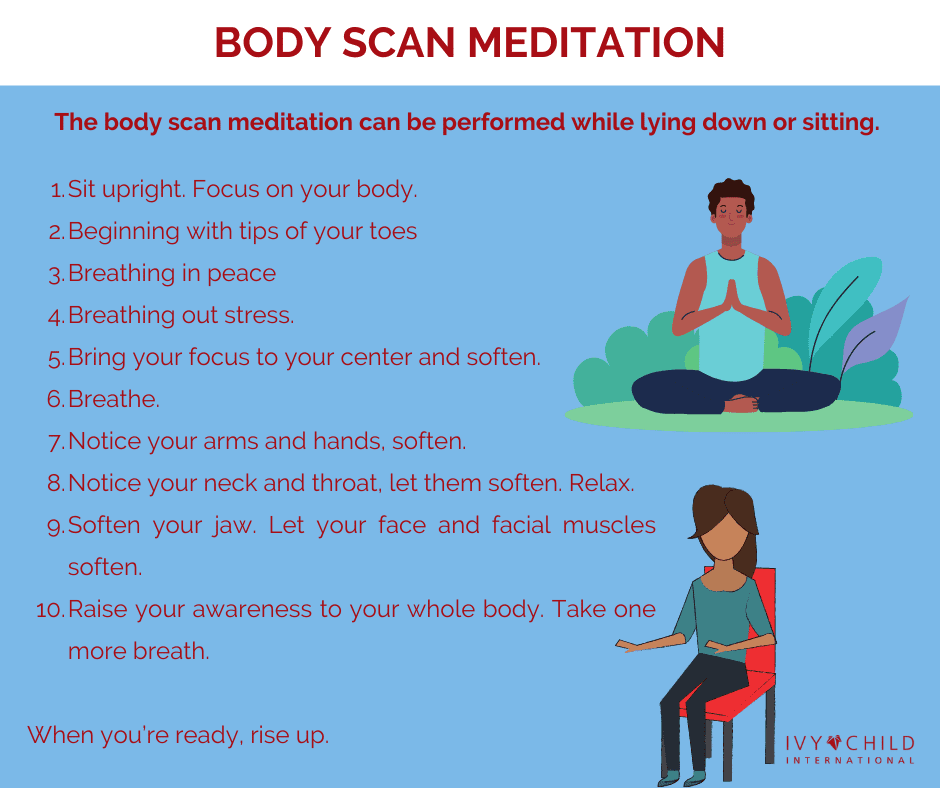 Body scan meditation is a meditative practice that involves mindfully scanning your body for sensations of pain, tension, or anything out of the ordinary. Developing greater awareness of bodily sensations can help you feel more connected to your physical self and gain greater insight into potential causes of unwanted feelings.
Body scan meditation is a meditative practice that involves mindfully scanning your body for sensations of pain, tension, or anything out of the ordinary. Developing greater awareness of bodily sensations can help you feel more connected to your physical self and gain greater insight into potential causes of unwanted feelings.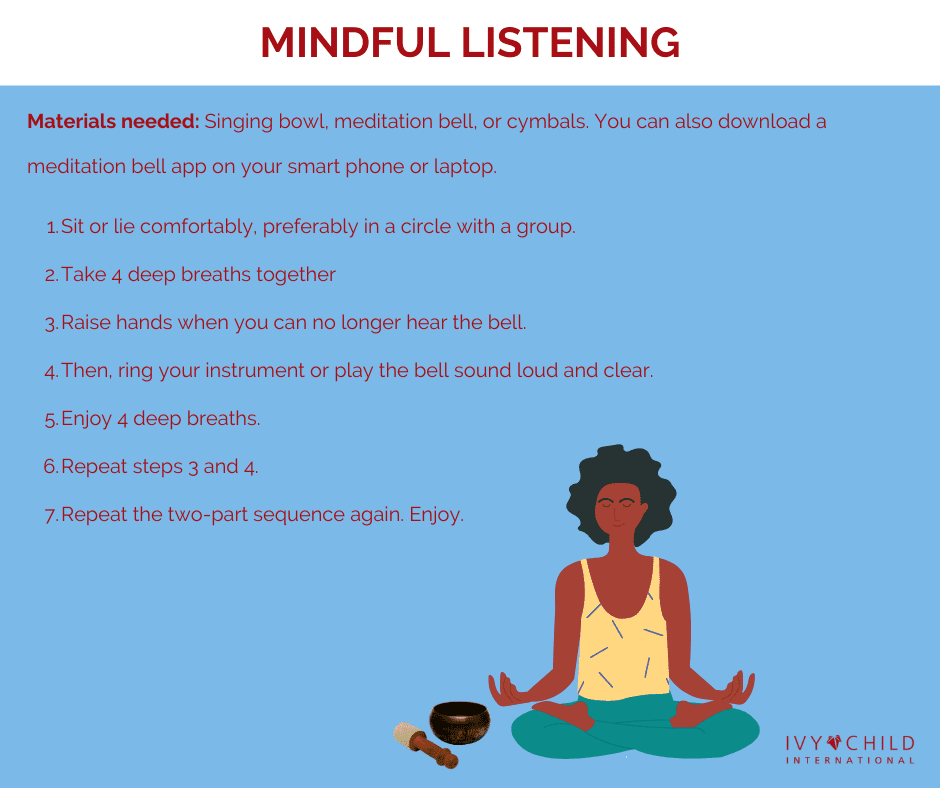 Mindful listening is a way of listening without judgment, criticism or interruption, while being aware of internal thoughts and reactions that may get in the way of people communicating with you effectively.
Mindful listening is a way of listening without judgment, criticism or interruption, while being aware of internal thoughts and reactions that may get in the way of people communicating with you effectively.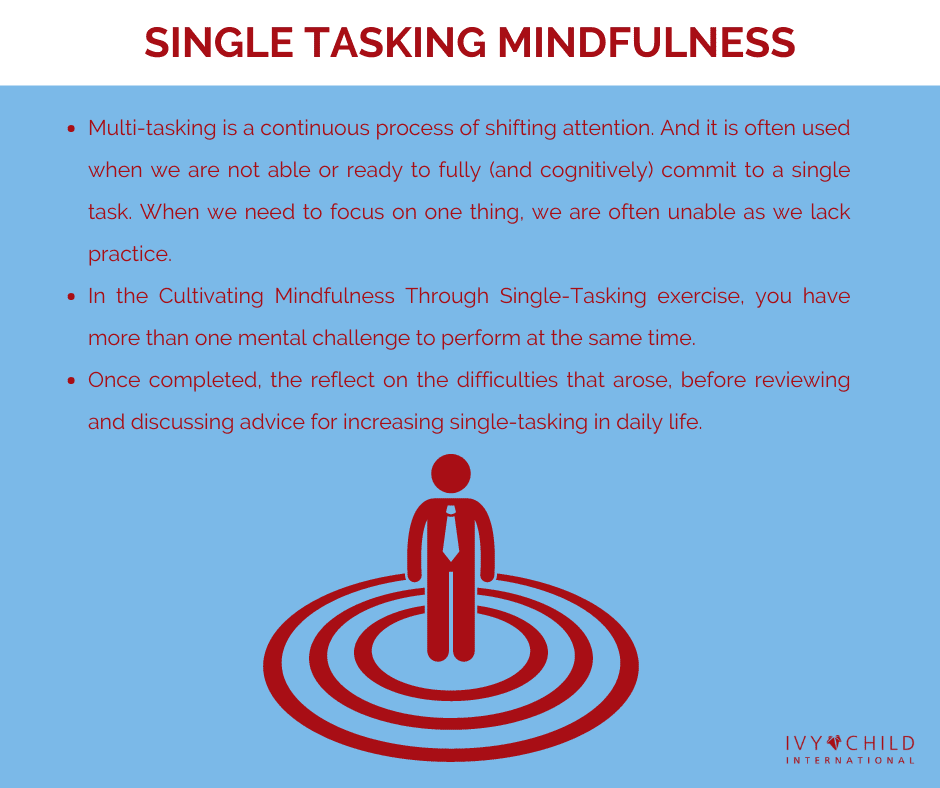 We live in a culture that loves efficiency. We’re always looking for a new and improved way to get more done in a shorter amount of time. And for a long time, our answer to this has been doing multiple things at once.
We live in a culture that loves efficiency. We’re always looking for a new and improved way to get more done in a shorter amount of time. And for a long time, our answer to this has been doing multiple things at once. Walking meditation is more than a simple stroll in the park. It is usually done much slower than normal walks, and involves either coordination with the breathing, or specific focusing practices. It looks more like meditation than like walking.
Walking meditation is more than a simple stroll in the park. It is usually done much slower than normal walks, and involves either coordination with the breathing, or specific focusing practices. It looks more like meditation than like walking.